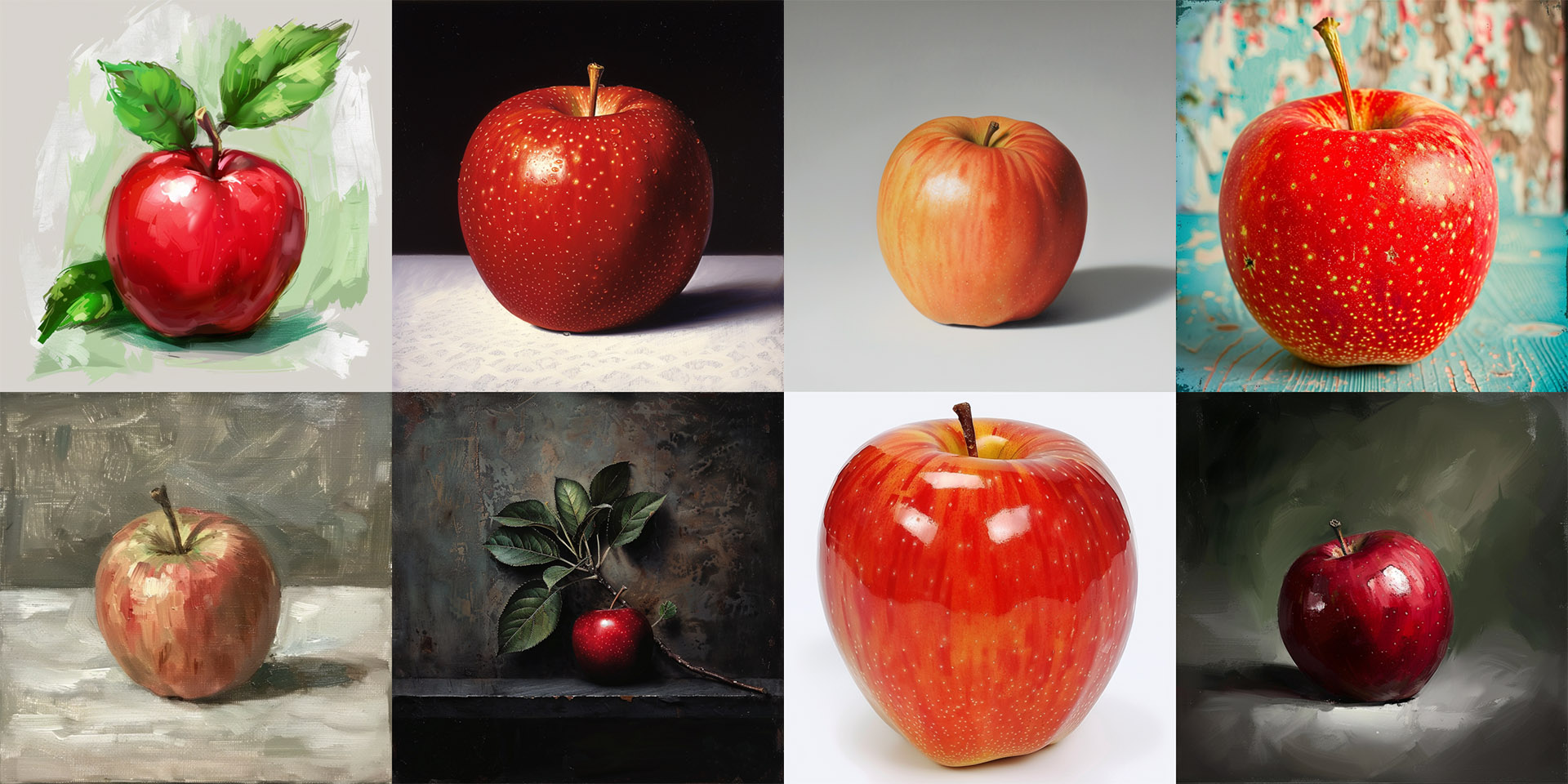
Portions of this article were written and edited by AI.
Artificial Intelligence (AI) has made significant advancements in recent years, and one astonishing development is the ability to generate images from text descriptions. But AI image generators don’t simply copy from a database – they create images from scratch by learning patterns from training data. This article will clarify how text-to-image models work their magic.
Training Text-to-Image Generative AI Models
The first step in developing a text-to-image model involves showing the AI a large number of image and text pairs during training. For instance, the caption “a red apple” would be paired with an image of a red apple. The more examples of each subject that are included in the training dataset, the better the model performs. Depending on the model’s complexity, this dataset can range from hundreds to millions of images. This extensive training allows the AI to learn the relationships between language and visuals.

A common model architecture used to power these AIs is called Generative Adversarial Networks (GANs). GANs consist of two key components:
Generator: Creates images based on text prompts.
Discriminator: Evaluates the generated images and provides feedback.
When the generator is first created, it knows nothing about translating text into accurate images. It begins by producing random noise images, which are unrecognizable garbled messes of static pixels.
Over many training cycles, the discriminator tells the generator which of its random images starts to resemble the paired text captions. Based on this feedback, the generator gradually adjusts its process for translating text into image data. It learns to map words to visual features such as shapes, colors, and textures. Eventually, the generator can render coherent and sensible images from text prompts alone.
Synthesizing New Images
During model use, a person types in a text prompt and the generator gets to work. It starts by generating a random noise image. Then based on patterns learned from training data related to that text, the model tweaks the noise pixel-by-pixel until an appropriate image emerges based on what it has been trained to accept something like what was described should look like.
For example, the prompt “a towering ice castle” may cause the generator to create elements similar to what it learned from images of frozen landscapes, tall buildings, and royal palaces during training. The result: a brand new icy castle scene!

This ability to create sensible, unique images from text demonstrates how AI models can build on randomness and prior learning to create novel images. The possibilities are endless as these models continue to advance.
